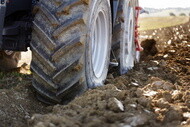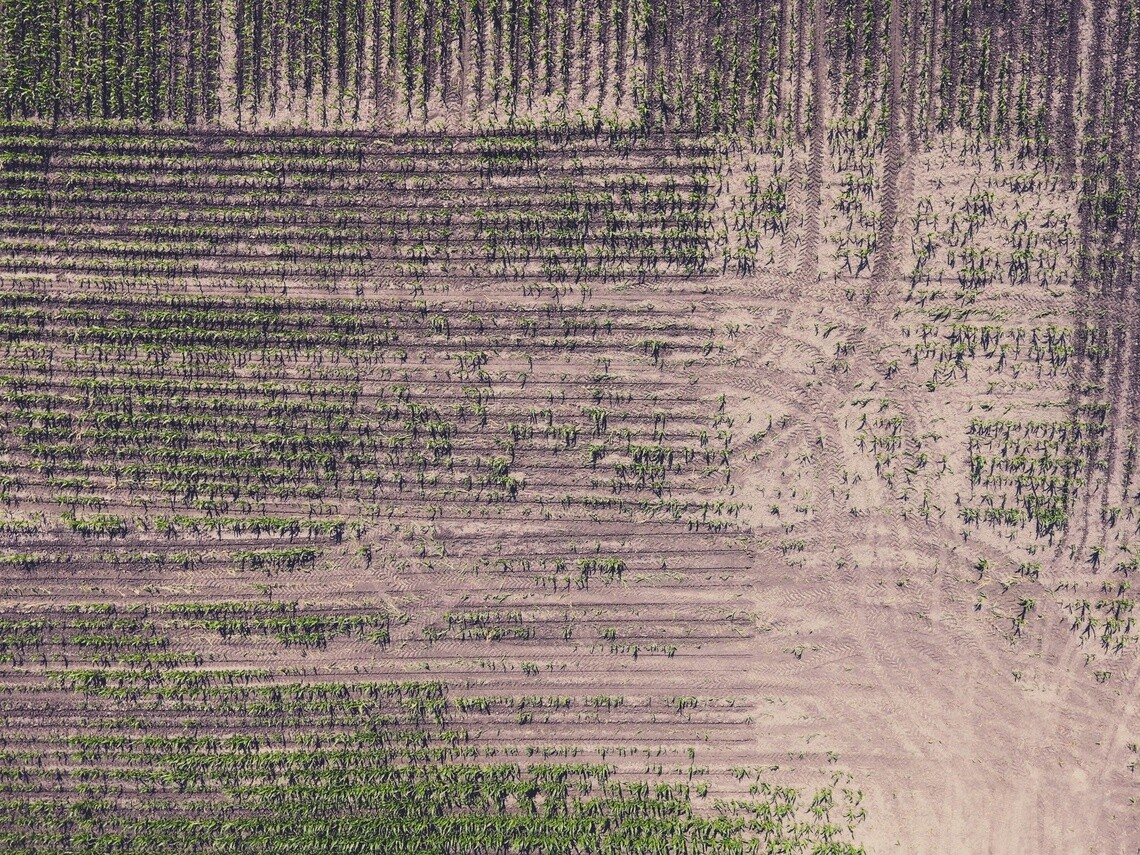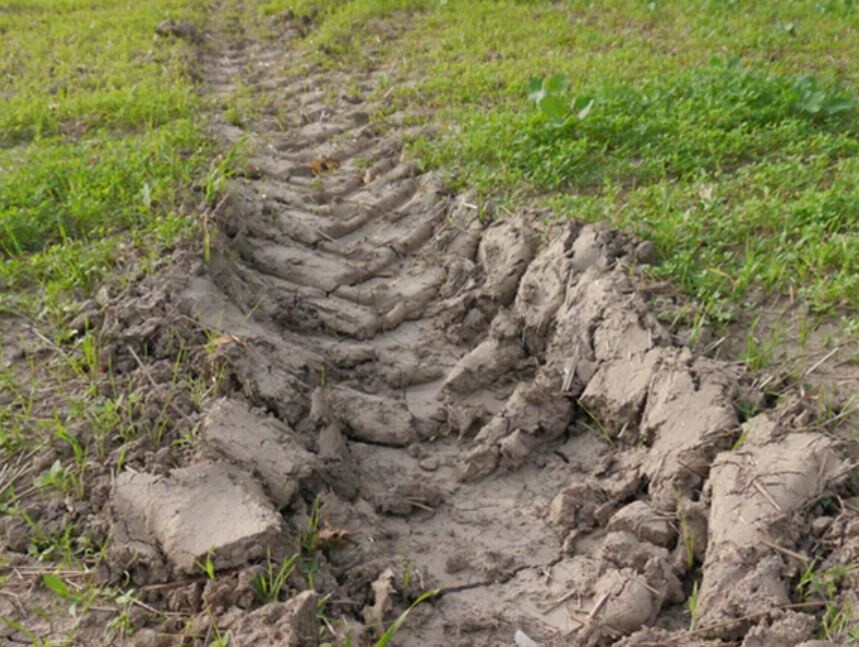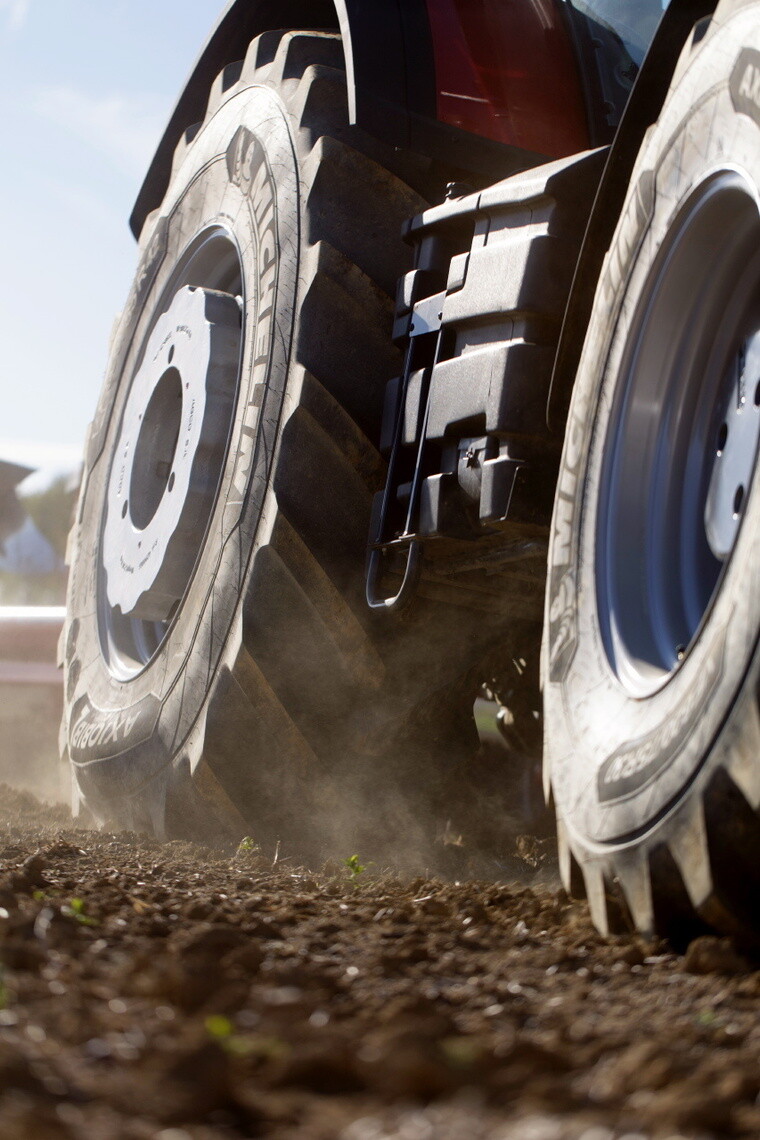
Tractor working in the field equipped with with Michelin
sculpture pneu MICHELIN AXIOBIB2
Reducing Soil Compaction
Since tires are in direct contact with the ground, its impact is guaranteed to compact the soil.
What is soil compaction?
Soil settling and compaction--main components of soil damage--are worsening due to increased agricultural equipment weight and ever-changing weather. Compaction is related to the soil's makeup, water content, the type of crops grown, and the load applied to the surface. The constant movement of machinery generates compression and damage, reducing aeration, permeation, and the ability for crops to root. Economic impact of soil compaction are significant: lower yields, disease development, and regenerative actions like plowing and/or decompaction--all of which waste time and fuel.

Aerial view of field with tire tracks
soil with tire tracks

A rut is a longways indentation in the soil
picture of a rut in a field
What is rut formation?
Ruts are large soil impressions created by agricultural equipment passing over the soil. Ruts are especially significant in muddy conditions.
The consequences can be catastrophic for agricultural development: nothing grows in a rut, so it represents net loss of yield.
The rut can cause water to pool which can asphyxiate plants and promote disease development.
Ruts also consume energy when using agricultural equipment. The depth of a rut is like a “step” that the tire must constantly cross, resulting in fuel consumption. A field with a lot of ruts will need restoring. As a result, time and fuel are wasted regenerating the soil for proper use.
MICHELIN Agricultural tires provide solutions to limit soil compaction and ruts. Our tires are able to support very heavy loads at very low pressure. Pressure in the tire is close to the average pressure exerted on the ground (example: pressure in the tire is 15 psi bar, the pressure exerted to the ground is 1kg/cm2). As a result, higher tire pressure will cause increased ground pressure, making soil compaction and ruts worse.
Michelin Recommendations
Michelin has developed agricultural tires that significantly reduce soil compaction and improves traction of agricultural equipment.
Recommendation No.1: opt for wide and “large volume” series
The objective of “wide” and “large volume” tires is to reduce load pressure and provide better traction, while retaining the same external diameter and rolling circumference as a “standard” tire.
A tractor originally equipped with standard tires can be fitted with wide or large volume tires. Michelin has developed wide and large volume tires in the following sizes:
• MICHELIN OMNIBIB 620/70 R42 160D TL and 480/70 R30 141D TL.
• MICHELIN MULTIBIB 650/65 R42 158D TL and 540/65 R30 143D TL.
• MICHELIN MACHXBIB 650/75 R38 169 A8 /169B TL and 600/65 R28 154A8/154B TL.
Original equipment: MICHELIN AGRIBIB (standard) 520/85R42 157 A8 /157B TL and MICHELIN AGRIBIB 16.9R30 137 A8/134B TL On average compared to the MICHELIN AGRIB the pressure in the MICHELIN OMNIB and MICHELIN MULTIBIB is at least 20% lower and the pressure in the MICHELIN MACHXBIB is on average 38% lower.

Edito 5 picture axiobib2 0081 at work 6 Help and Advice
Pneu Michelin axiobib 2 en action
Recommendation No.2: Choose Michelin UltraFlex Technologies
Thanks to MICHELIN UltraFlex technology, agronomic performance optimization starts at the tire level. The secret? An innovative, extremely durable carcass that allows greater flexibility. As a result, tires equipped with MICHELIN UltraFlex can support heavy loads even at lower pressure, regardless of speed. And that's not all: the flexible carcass creates a larger footprint, increasing traction. Benefits include:
• saving time and fuel
• preserving your soil
• increasing your crop yields
Download free agricultural equipment inflation tables by tire line.
Interested in more tips and tricks?
• Read and understand tire markings
• How and why to ballast your tires for optimal use
• How to mount and dismount your tires
• Find the right rim, tubes, and valve fitments
• Safely store your tires




